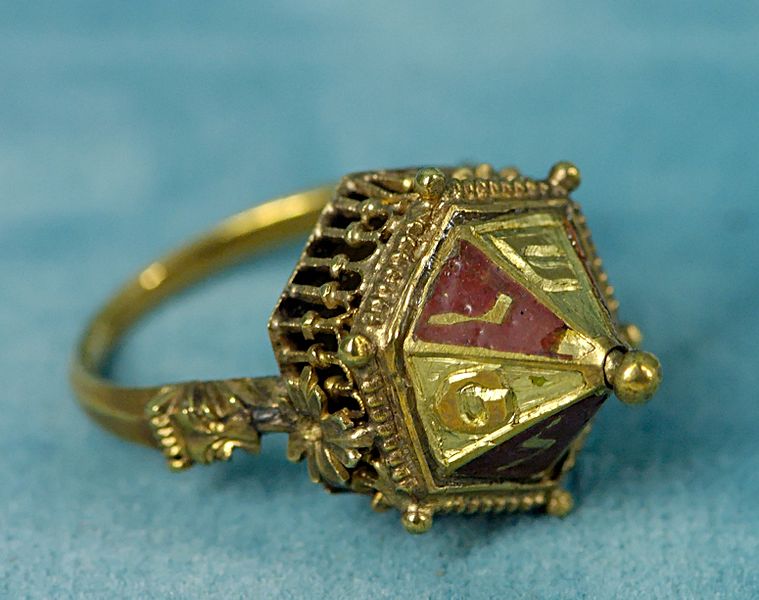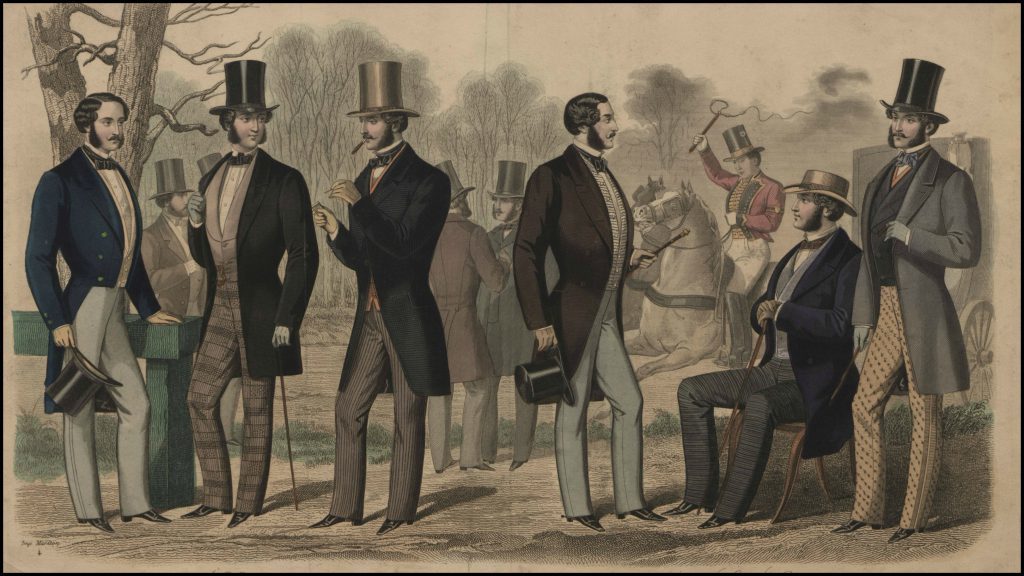By the Editors of the Bibliography of British and Irish History
A little late but we are hoping for an Indian summer. Welcome to our summer top ten for 2019! Here we compile a list of the most interesting items we have come across in the previous six months (we usually whittle down a list of 30 to the top ten such is the range of history articles).
So find some time to relax at the end of the summer period and take a chronological trip with us through a handpicked collection of interesting and unusual content from the Bibliography of British and Irish History.
1. The first study of bells found at Romano-British sites opens our listing. The sound of magic? Bells in Roman Britain explores the significance of bells in the Roman world from both a ritual and a functional perspective. The analysis is based on over 300 copper-alloy or iron bells.
The article creates a first typology of Romano-British bells as well as an understanding of their chronology and examines spatial and social differences in their use. Bells from funerary or ritual contexts are also explored and there are indications that small bells were used as protective charms and may have been placed into the graves of children and young women. Intriguingly the article identifies a new type of bell that has no counterparts within the Roman Empire, although similar bells appear in first- and second-century graves in the Black Sea region. Such a relationship is difficult to explain but the movement of military units may explain the similarity.
2. There has been a rise in research and publications about the history of emotions see for instance, New histories of emotions, AHR Conversation: The historical study of emotions and What is the history of emotions? Adding to this trend is the article Passionate language: Models of compassion in Nicholas Love and Margery Kempe in the Journal of Medieval and Early Modern Studies which examines how the language of compassion (compassioun) came into English culture and how it was deployed for theological as well as political purposes. Using Love’s The Mirror of the Blessed Life of Jesus Christ and Margery Kempe’s Book it shows how the original idea of compassion developed from the Passion narratives.
3. The first English collector of Jewish wedding rings and their dealers discusses genuine medieval (mainly fourteenth century) Jewish marriage rings and then examines the rise in the collecting of such rings in the nineteenth century. As a result of the popularity in collecting these rings and the lack of genuine medieval examples, forgers of course saw an opportunity. They created rings that copied the characteristics of the early examples. The article also considers the possible motives for acquiring Jewish marriage rings.

4. The Book club of Old Edinburgh club volume 18, 2018, has the article Edinburgh’s first Chinese gentleman which documents the biography of William Macao 1743-1831, his arrival in the mid-1770s, his role and promotions in the Board of Excise customs office, his marriage and children and his social standing in Edinburgh society as well as his position as an “alien” in Scottish society.

5. Irritated by people talking on their phone and trying to walk around them? Then think of the walking stick in Victorian cities which seems to have created equal irritation, so much so that the Pall Mall Gazette in 1889 carried an article “How to carry a walking stick”. This irritation and the Gazette reference is explored in The walking stick in the nineteenth-century city: Conflicting ideals of urban walking. The way of holding a stick or a cane (not used for walking) led to ideas of masculine performance with a “swagger”. This forced Victorian men to be extremely careful of how their behaviour was perceived. Most of the examples are British but it seems to have been a problem in Sweden, German-speaking countries and in America.

6. Close Encounters of the Wardian Kind: Terrariums and Pollution in the Victorian Parlor by Lindsay Wells in Victorian Studies. Originally used for transporting plants, the Wardian case was adapted to Victorian homes as a decorative object. The author argues that the increased focus on caring for plants in a Victorian environment drew connections with coal smoke and air pollution, which in turn led to a greater understanding of the Victorians’ fragile relationship with the natural world. This connection between pollution and everyday life brought to the forefront the consequences of industrialisation.

7. Next up we have, “Clean Nails are the Mark of a Well Brought-Up Girl” : Exploring gender in a post-Edwardian girls’ school exercise book by Lauren O’Hagen in Women’s Studies: An inter-disciplinary journal. Using the exercise book of Violet Hayes who attended Hannah More Girl’s School in Bristol 1907-1919, the article explores representations of gender and schooling. Hayes was the great-grandmother of the authors which adds a poignancy to the article.
8. A little while back there was a blog post on embroidery so it seems is appropriate to include this intriguing article, ‘The work of masculine fingers’: the Disabled Soldiers’ Embroidery Industry, 1918–1955 by Joseph McBrinn. There were many schemes for returning veterans (disabled or not) and the Disabled Soldiers’ Embroidery Industry was perhaps the most successful and high-profile scheme. This brief analysis of its history, made possible by the recent discovery of a small archive of the scheme’s papers and a number of surviving embroideries helps in the writing of its history as well as insight into masculine identity and the disabled body. See also the author’s other equally engaging article Queer hobbies: Ernest Thesiger and interwar embroidery.
9. “The Penguins are coming”: Brand mascots and Utopian mass consumption in interwar Britain by Richard Hornsey in the Journal of British Studies. This article looks at Britain in the 1920s and 1930s, considering the cultural branding and mass consumption in this period, and specifically focusing on the motif for Penguin books. First appearing in 1935, the penguin motif was displayed on paperback covers and promotional material. The author argues that, following the cultural rise of the brand mascot, the penguin was used to ‘forge a leftist vision of social-democratic progress’, using mass-production, chain-store distribution and in-store display techniques to create an immediately identifiable commodity. The motif came to represent modern social progress, and consumers identified with the utopianism of cultural democracy.
10. Turning to sport, we have ‘Five goals, no boots’: an interrogation of the politics, play and racialised athleticism of late colonial football tours to England, 1949–1959. This essay explores a series of football tours from Britain’s colonies in Africa – Ghana, Nigeria and Uganda as well as the Caribbean. It examines the coverage and analysis of these tours in the British media, with particular reference to the different racialisations players from these territories were subject to throughout the period. Finally, it stresses the importance of localised, seemingly innocuous settings (such as the lower league football stadium) in formulating meaning and signifying identity during the period. This is a timely article, given the Windrush controversy and the possibly of comparing the football tour reception with that the of 1940s migration of West Indians.
As a contrast or a complement what about the article, The positioning of indigenous people in Australian history: A historiography of the 1868 Aboriginal cricket tour of England? This article looks at the first international tour by an Australian sports team undertaken by a group of Aboriginal cricketers. It uncovers the phases of reporting, forgetting, rediscovery, exploiting, and self-determination that representations of the tour have gone through. It is argued that these phases provide an analogy for the positioning of Indigenous people and Indigenous history in Australian society.
We know it’s cheating but we could not resist adding the next article. “Time can be rewritten”: The Doctor, the book, and the database by Christopher Marlow in the Journal of Popular Culture. From its first episode in 1963 through to 2017, this article looks at the popular television programme Doctor Who through its portrayal of printed books and electronic databases.
The author argues that books are never merely containers of knowledge in the ‘Whoniverse’, they are far more ambiguous than that, often acting as signals of impending danger. The crux of the article is the unsettling relationship between book and database, and the hazy line when one becomes the other. This holds a mirror up to our culture, where analogue and digital worlds constantly collide. It also provides further consideration of the book as object, and some interesting parallels can be drawn between this article and the work of Dot Porter and Brandon Hawk, who have been looking at the use of manuscripts in Star Wars.

About the Bibliography of British and Irish History: the Bibliography (BBIH) is a is the most comprehensive and accurate guide available to what’s been written about British and Irish history.
With records of over 605,000 books, articles, collections and book chapters, including 2018-19 publications, it’s an essential resource for research and teaching. Find out more about the Bibliography.

